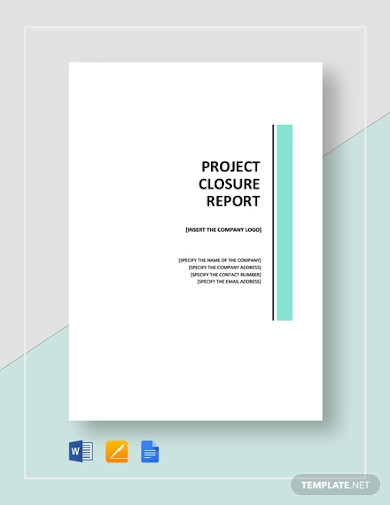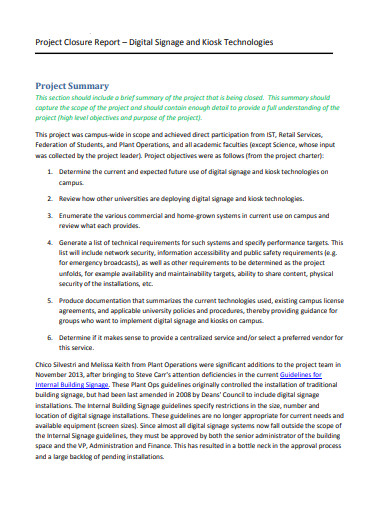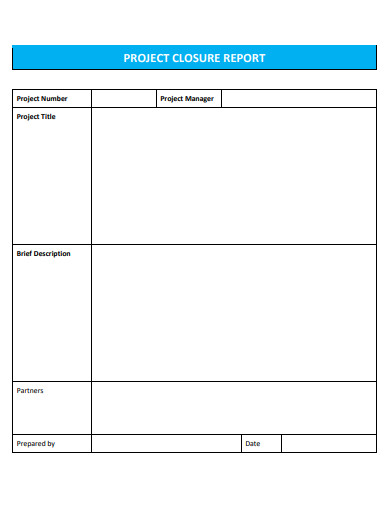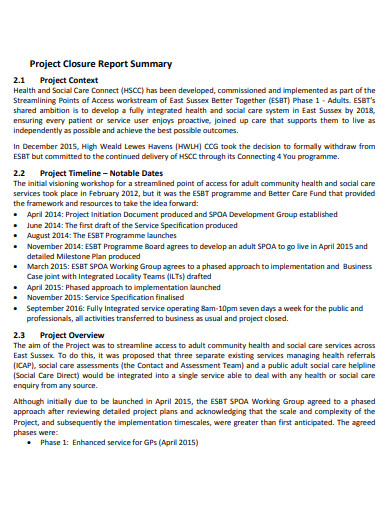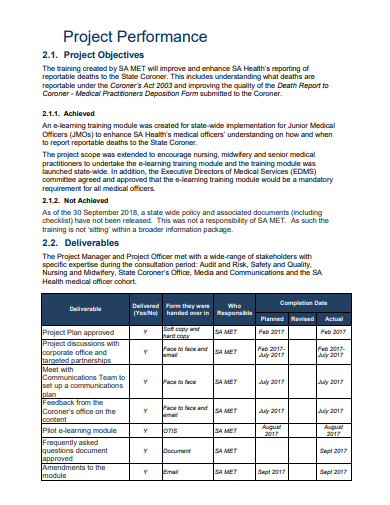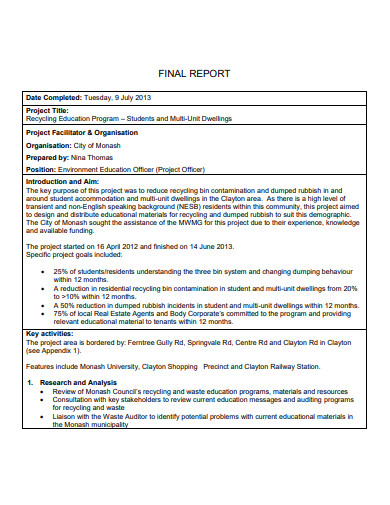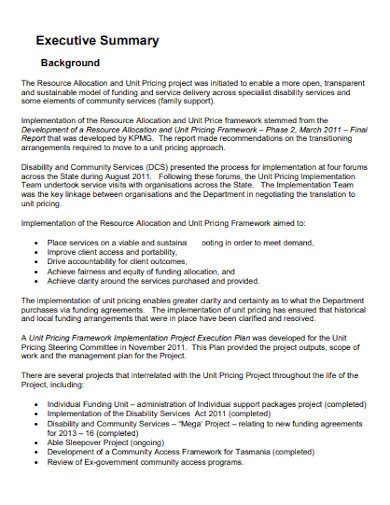7+ Project Closure Report Examples to Download
Part of successful project management is project closure. In this stage, a certain contractor has to produce a project planning document, particularly a report, where you create an executive summary of your project result or project completion. It is also the final phase when the steering committee has to perform relevant activities, like handover the deliverables, create post-implementation review, state lessons learned, adding the report to the project reference list, and version control. There are a lot of report examples and templates on the web. For you to have specific ones, we offer Free 7+ Project Closure Report Examples available in PDF, Microsoft Word, Google Docs, and Apple Pages file formats.
7+ Project Closure Report Examples
1. Project Closure Report
2. Sample Project Closure Report
3. Construction Project Closure Report
4. Health and Social Care Project Closure Report
5. Simple Project Closure Report
6. Basic Project Closure Report
7. Project Closure Report Example
8. Printable Project Closure Report
What Is a Project Closure Report?
A project closure report is a document that enumerates and describes the goals and objectives of a project, as well as specifies when it was fully completed. Aside from that, it also gives out full details of the project closure activities. The software solution provider, New Signature, cited in their website the reasons why such an undertaking is so significant in the project management. According to them, it reaffirms that the project objectives are satisfied, revamps the sensibilities of the accomplishment, and improves associations in the future. They added that project closure also enlightens both clients and contractors, recognizes the stakeholders, and ensures the completeness of paperwork.
When Do Project Closures Occur?
The American author, Jack Kornfield, said in his book entitled Buddha’s Little Instruction Book the quotable quote that goes, “Everything that has a beginning has an ending.” It is very much applicable in all aspects of life, especially in business where thousands, or maybe millions, of development project proposals, are being handed out to companies from both internal and external sources. Based on Erik Larson and Clifford Gray’s fifth edition of Project Management: The Managerial Process, project closure has different types, namely standard, premature, perpetual, failed project, and changed priority.
- Normal – Project closure occurs when the overall project is completed.
- Premature – Project closure occurs even before the deadline. At most times, this happens due to the project owners’ agitations.
- Perpetual – Project closure is often extended because of the poor establishment of a project’s scope of work.
- Failed Project – Project closure takes place when the project team is no longer capable of performing the activities set in the project agenda due to many factors.
- Changed Priority – Project closure transpires when the project sponsor decides to do so to make way for another project that he or she thinks is more important according to his or her business development strategy.
How to Prepare a Project Closure Report
A project closure report, also known as a project final report, is the process document that a contractor provides to its client. Hence, it must be made clearly and comprehensively. There is no need for you to worry about its completeness because we provide you with an outline for such a report below.
1. Set the Project Completion Basis
Start the composition of your project closure report by setting the success criteria of your project. In other words, you set and fill a project assessment for the information of your client.
2. Enumerate Significant Deliverables
Long-term goals take long years to complete. So it is safe for us to say that within that long period, a lot of significant circumstances happened. To stimulate an exhilarating feeling on your client, you have to enumerate the significant events that involve deliverables.
3. Plan the Handing Over of Deliverables to Clients
Clients or customers pay your firm to complete a part of their business development strategies, making them the rightful owner of the product or undertaking that you developed or established. Therefore, you have to scheme how you are going to turn over the said product or performance for you to fulfill client or customer satisfaction.
4. Terminate Contracts and Agreements
Now that your firm has fulfilled its duties and responsibilities successfully, then you can proceed to the agreement and contract termination. This action turns your report into a formal and legal document that entails the dissociation between you and your client.
5. Yield Project Resources
After the termination of your contracts and agreements, turnover to the client all the remaining resources both in the supply inventory and data inventory included in the project’s inventory management.
6. State the Official Closure
It is In this part of your report where you make a sort of official statement letter that confirms the closure of your project. By doing so, you communicate not just with the client but also to all the stakeholders who took part in the successful development of your campaign.
FAQs:
1. What does the lesson learned mean in project management?
In project management, the lesson learned is described as the knowledge that has been obtained all throughout a project. The point of recording one is to encourage the use of the gained knowledge for future ventures, as well as to avoid identical complications.
2. Is project closure necessary?
Project closure plays a crucial role in the project management process. Aside from addressing legal concerns, such a phase has essential records that are useful for plans.
3. What are the knowledge areas of project management?
According to the Project Management Body of Knowledge (PMBOK) Guide, there are ten areas of knowledge for project management. These include integration management, scope management, schedule management, cost management, resource management, quality management, communications management, risk management, procurement management, and stakeholder management.
You might have heard the quote, “Don’t start what you can’t finish.” When applied in business development, it merely provides us with the idea to equally give importance to all phases of any undertaking. Moreover, projects are divided into phases for many reasons. And, one of them is to transition from one stage to the other smoothly. Project closure, just like different phases, is essential in its own essence. It may or may not transition to another phase, but the marking of the lessons learned will indeed be instilled in the participants’ minds.



